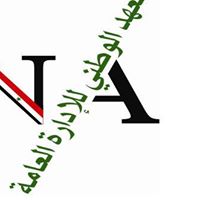اشترك بالحزمة الذهبية واحصل على وصول غير محدود شمرا أكاديميا
تسجيل مستخدم جديدDemonstration of Controllable Temporal Distinguishability in a Three-Photon State
222
0
0.0
(
0
)
اسأل ChatGPT حول البحث

ﻻ يوجد ملخص باللغة العربية
Multi-photon interference is at the heart of the recently proposed linear optical quantum computing scheme and plays an essential role in many protocols in quantum information. Indistinguishability is what leads to the effect of quantum interference. Optical interferometers such as Michaelson interferometer provide a measure for second-order coherence at one-photon level and Hong-Ou-Mandel interferometer was widely employed to describe two-photon entanglement and indistinguishability. However, there is not an effective way for a system of more than two photons. Recently, a new interferometric scheme was proposed to quantify the degree of multi-photon distinguishability. Here we report an experiment to implement the scheme for three-photon case. We are able to generate three photons with different degrees of temporal distinguishability and demonstrate how to characterize them by the visibility of three-photon interference. This method of quantitative description of multi-photon indistinguishability will have practical implications in the implementation of quantum information protocols.
قيم البحث
اقرأ أيضاً
An experiment is performed to demonstrate the temporal distinguishability of a four-photon state and a six-photon state, both from parametric down-conversion. The experiment is based on a multi-photon interference scheme in a recent discovered NOON-s
tate projection measurement. By measuring the visibility of the interference dip, we can distinguish the various scenarios in the temporal distribution of the pairs and thus quantitatively determine the degree of temporal (in)distinguishability of a multi-photon state.
By using an asymmetric beam splitter, we observe the generalized Hong-Ou-Mandel effects for three and four photons, respectively. Furthermore, we can use this generalized Hong-Ou-Mandel interferometer to characterize temporal distinguishability.
The complementary principle of quantum mechanics relates qualitatively the visibility of quantum interference with path indistinguishability. Here we propose a scheme of constructive quantum interference involving superposition between an $N$-photon
state and a single-photon state to characterize quantitatively the degree of temporal distinguishability of the $N$-photon state. This scheme is based on a generalized photon bunching effect. Such a scheme can be extended to other more general cases.
A number of recent interference experiments involving multiple photons are reviewed. These experiments include generalized photon bunching effects, generalized Hong-Ou-Mandel interference effects and multi-photon interferometry for demonstrations of
multi-photon de Broglie wavelength. The multi-photon states used in these experiments are from two pairs of photons in parametric down-conversion. We find that the size of the interference effect in these experiments, characterized by the visibility of interference pattern, is governed by the degree of distinguishability among different pairs of photons. Based on this discovery, we generalize the concept of multi-photon temporal distinguishability and relate it to a number of multi-photon interference effects. Finally, we make an attempt to interpret the coherence theory by the multi-photon interference via the concept of temporal distinguishability of photons.
We demonstrate an efficient experimental scheme for producing polarization-entangled photon pairs from spontaneous four-wave mixing (SFWM) in a laser-cooled $^{85}$Rb atomic ensemble, with a bandwidth (as low as 0.8 MHz) much narrower than the rubidi
um atomic natural linewidth. By stabilizing the relative phase between the two SFWM paths in a Mach-Zehnder interferometer configuration, we are able to produce all four Bell states. These subnatural-linewidth photon pairs with polarization entanglement are ideal quantum information carriers for connecting remote atomic quantum nodes via efficient light-matter interaction in a photon-atom quantum network.
سجل دخول لتتمكن من نشر تعليقات
التعليقات
جاري جلب التعليقات


سجل دخول لتتمكن من متابعة معايير البحث التي قمت باختيارها


